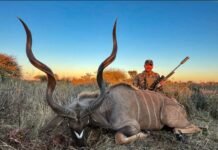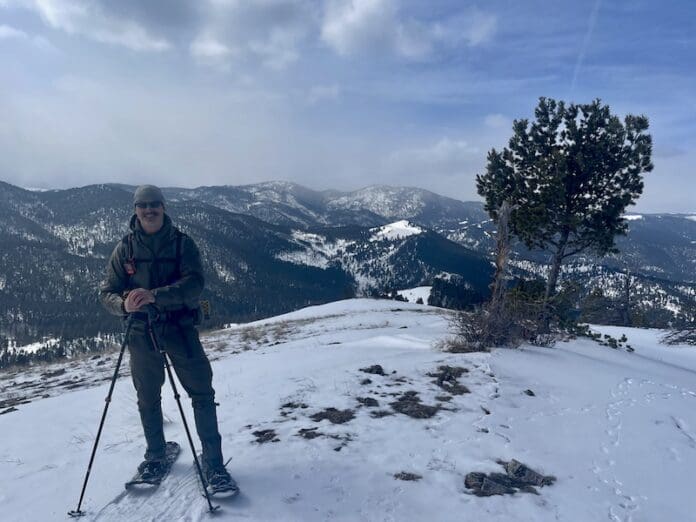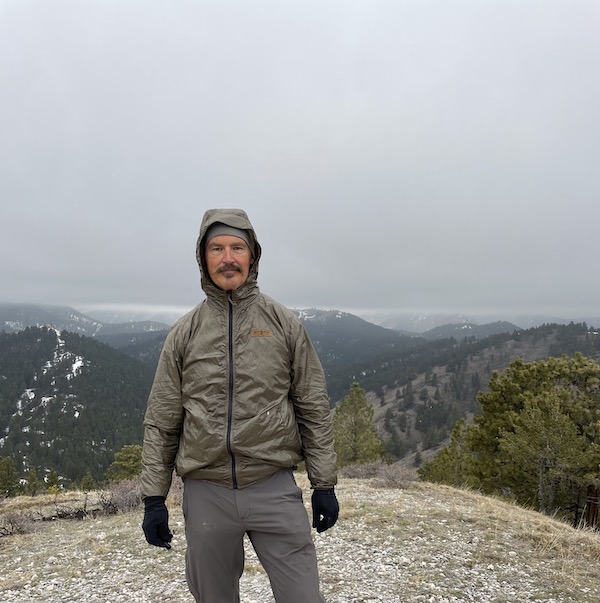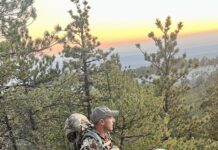
The fellas at Kifaru were kind enough to send me a Wind River jacket to review.
They describe the jacket like this:
“Made from our 30d High tenacity ripstop nylon, the Wind River jacket packs into an integrated pocket on the front. This hooded jacket will add the final wind-blocking layer to your layering setup without taking up too much weight or space in your pack. The hood, cuffs, and back hem have integrated bungie to help the garment move ergonomically with your body. In its packed form, there is a tab to secure the jacket to any of the key hooks in our packs.”
Kifaru Wind River Jacket
The Wind River jacket only comes in one color- Ranger Green, a hunter friendly color. It retails for $100. The jacket is also 100% American made- a real rarity these days for garments and much appreciated! See it here.
The first thing that you notice is this jacket is light, not just regular light, but uber light! Mine in size Large, weighs just 4.4 oz!
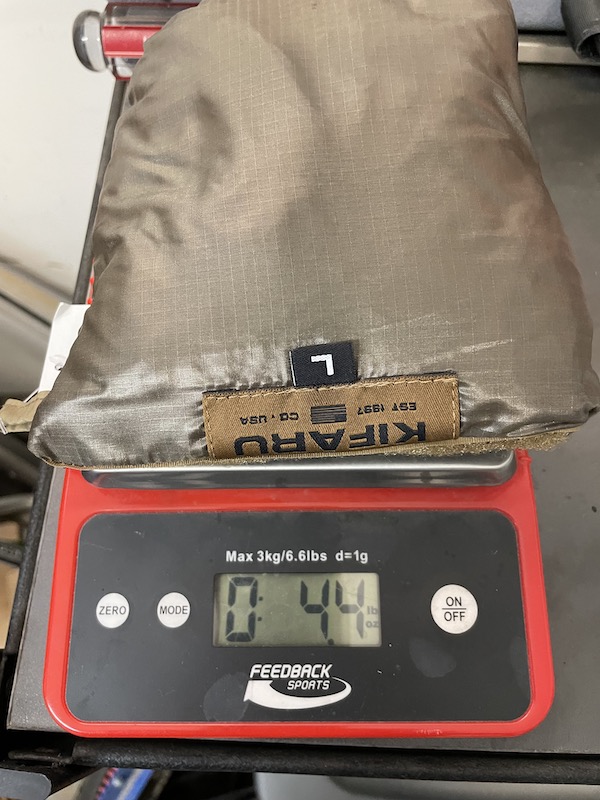
Integrated Stuff Pocket
The Wind River jacket stuffs into its single hand pocket for a very compact package. Compact enough that you could get it into most cargo pockets.

The jacket has elastic around the hem and cuffs and a small amount of elastic at the rear of the hood. The jacket measures a very nice 29.5” long in the back; a lot of manufacturers don’t get that a jacket used in the outdoors should come down around and below your waist- Kifaru obviously does.
30d Fabric
There are a few ultralight wind jackets (windshirts) out there that tip the scale in and around the 4-5 ounce range, but none in a 30d nylon fabric, most are in the 7-10d range. 30d certainly wouldn’t qualify as bomber, but pretty sturdy for such an ultralight garment.

I asked Eric, product manager for Kifaru, a little about the fabric and if it had a DWR, he responded:
“The 30d material we used for the Wind River Jacket doesn’t have a DWR treatment. It is calendared on one side by the mill, which helps the fabric stand up to down quills. This process pulls the fabric over a hot roller and essentially seals one side. This also helps bust wind and adds long term durability as the weave is set after this process.”
He also related it’s the same fabric they use on their popular Lost Park Parka.
Field Testing
I got to use the Wind River jacket on an almost daily basis (I hike/snowshoe our local trails daily) for two months (March and April) in Montana, and I also brought it along on a five-day backpacking trip in the Mazatzal Wilderness (AZ).
Fit and Finish
The fit for my 5’11’, 185-ish lb frame was perfect! It layered easily over a light base layer, a light base layer and mid-layer, and even a midweight puffy.
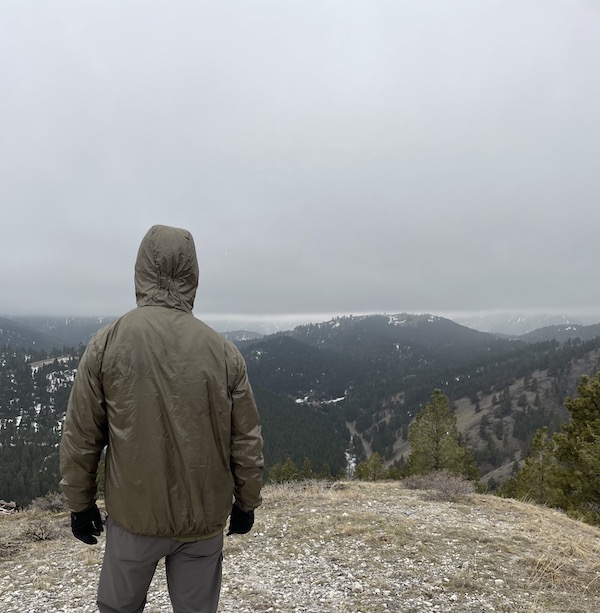
The elastic in the hem and cuffs secured the jacket perfectly. The hood, however, was a little too loose for my 7 1/8” head. It was better with a ball cap on, but still, a stiff wind might blow it off. I would have preferred a shock cord adjustment for the hood so you could make it fit snugly if needed.
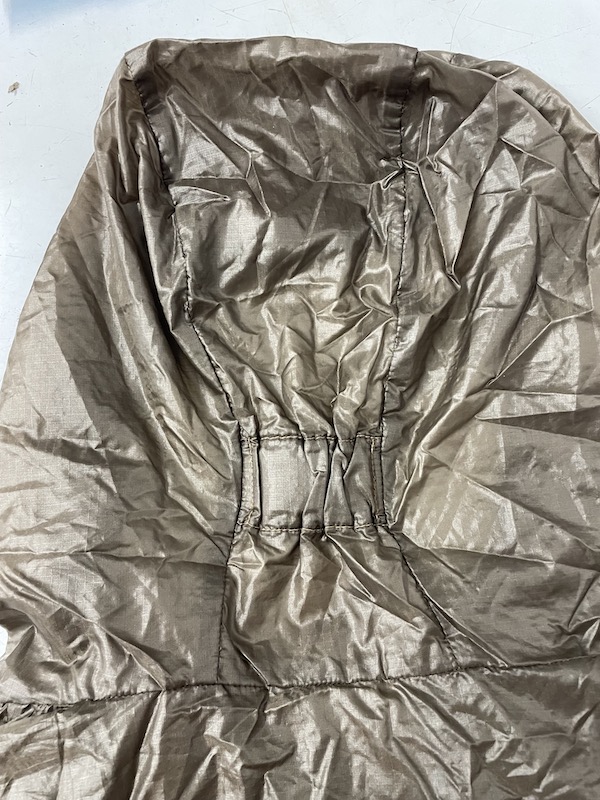
The fabric has a light sheen that might be of concern for archery hunters. The fabric is not noisy, but it’s not super quiet either. I know some archery hunters that wear their wind layer underneath a quieter layer- this technique would work with this jacket.
Wind Resistance
The wind resistance of the Wind River jacket is very good. I was out with the jacket numerous times with high winds, and it did a great job of cutting the wind. Until you’ve used a “wind shirt,” you really can’t fathom how much warmth a few ounces offers- especially in the wind.
Breathability
Typically if the wind resistance of a garment is higher, the breathability is likely to be lower. This jacket is no exception. I found the breathability was just about perfect at a hunting pace (slow and easy), good at a moderate pace (~1.5-2 mph on uneven terrain), and fair at a faster pace or higher output (i.e., steep climb). If you’re looking for a wind layer for high aerobic activities- i.e., trail running, nordic skiing, etc., you would be happier with a more breathable jacket. For hunting, I think the Wind River strikes a very good balance between wind resistance and breathability.
Precipitation Resistance
The Wind River has no DWR finish, BUT it actually did pretty well in light rain and snow. This could be due to the tight weave of the fabric or the calendaring of the fabric (or a combination). Regardless, it still would benefit from a DWR. I think a good spray or wash in DWR would be of benefit, and I plan on spraying mine with some Granger DWR stuff I have. I’ll report back in the forum thread linked below on the results.

Durability
I don’t expect a 4-ounce jacket to be overly durable, but I found the jacket surprisingly durable for its weight. I wore it in Arizona on a backpacking trip where we encountered a lot of thorny stuff. While I wouldn’t recommend this jacket for busting thorny patches, with a little caution the jacket did fine.

Conclusion
I found the Wind River jacket to be a great addition to my clothing system. It definitely punches above its weight. It really cuts the wind and adds warmth to whatever you’re wearing.
It’s so small and light; there really isn’t a scenario where I wouldn’t bring it. You can even carry it in a cargo pocket!
My only suggestions for improving the jacket would be adding a shock cord adjustment for the hood and having the fabric manufacturer add a DWR coating.
Two thumbs up for this well-made American product. Available here.
Comment or ask Mike questions in our forum.
Check out more clothing reviews here.








